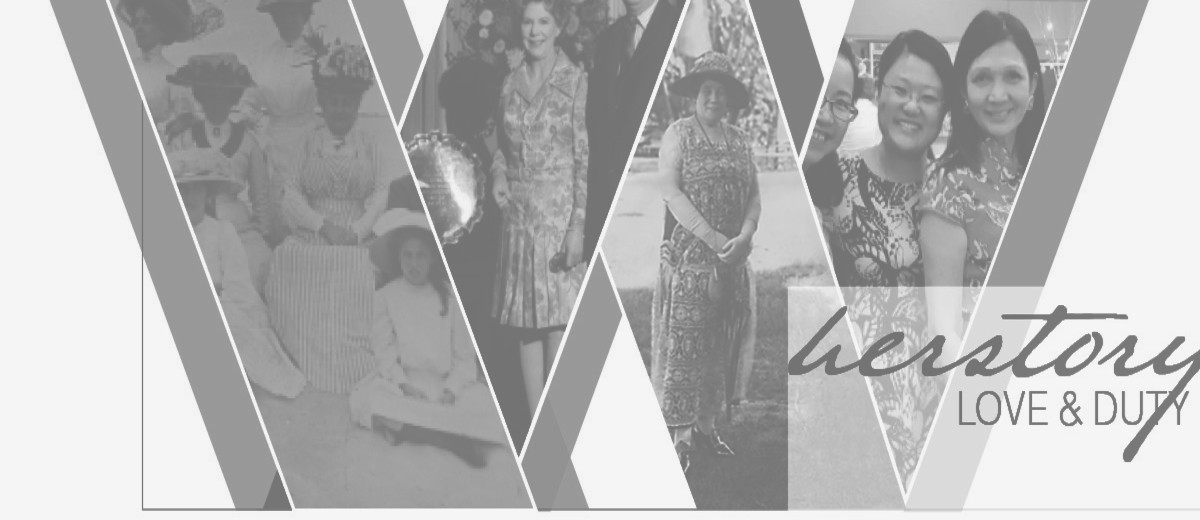Person
ContributeLady Deborah Vernon Moulden was Lady Mayoress (married to the Lord Mayor) between 1919-1921.
Early Life and Career
Deborah Vernon Drake-Brockman (1887-1965) was born in West Guilford, Western Australia on June 18, 1887, the child of Frederick Slade Drake-Brockman, a WA explorer and Surveyor-General of that state, and Grace Ellen Bussell, the daughter of a wealthy WA family for which the town of Busselton is named and a woman famous in her own right after having saved shipwrecked passengers off the coast of Western Australia’s Redgate Beach in 1876 when she was only sixteen years old.
One of very few girls allowed to be educated at the Guilford Grammar School for boys, Deborah was the third of seven children whose childhoods allowed them the opportunity to play with the Aboriginal children of the local area. She would eventually become known as Dr Buller Murphy in later life, after her first husband, as a benefactor of the University of Western Australia, was honoured posthumously in 1932, and Deborah was included in the honours by the University bestowing an honorary Doctorate of Laws upon her. Deborah would also eventually write a book in 1958 called An Attempt to Eat the Moon, a collection of Aboriginal stories.
Throughout Deborah’s service as Adelaide’s Lady Mayoress, she embraced the social interaction aspect of the role while also paying particular attention to the opportunity she had to make positive differences to her adopted South Australian society. Described in one newspaper article, covering her entertainment of two visiting vocalists, as...
wearing modish toilette of tete de negre satin, ostrich feather, boa to match, and small toque of the same shade, and flowing veil
It is easy to imagine a woman of celebrity appeal possessing a joie de vivre that was eye-catching and magnetic.
Among other good causes, Lady Hackett was associated with the Charity Carnival Committee; football charity matches; the Sailors, Soldiers and Nurses’ Relatives and the Adelaide Children’s Hospital – for which she was able to raise £20,000 in 1921 and was quoted in the press as saying,
I am willing to do anything in my power to help … and if a committee is formed, to place my services at its disposal
Deborah was known by many names throughout her life, as she was married three times in total. In 1905, as an 18-year-old she became the wife of John Winthrop Hackett, a man forty years her senior, with whom she had four daughters and a son in WA. When John, the editor of the newspaper the West Australian, was knighted in 1911 Deborah became Lady Hackett. However, she was widowed in 1916, when Sir John passed away from heart disease. She married Frank Beaumont Moulden in Adelaide in 1918, not long before he was voted in as Adelaide’s Lord Mayor, and as Frank had no children of his own he step-parented and helped raise Deborah’s. Frank was knighted in 1922, after which time Deborah became known as Lady Moulden, but sadly, Sir Frank passed away in 1932 from a cerebral haemorrhage. Deborah found herself widowed for a second time, and it wasn’t until 1936 that she married for her third and final time – this time in Melbourne to barrister, Basil Buller Murphy, a younger man by eight years. She was to remain married to him until his death in 1963 – a total of 27 years.
Contributions/Achievements
Deborah was a tireless worker for the community, not only while she served as Lady Mayoress of Adelaide, but either side of that role also. A Girl Guide Leader from 1918 until 1935, Lady Moulden was also a recipient of La Medaille de la Reconnaissance Française, an award made by the French Government for her efforts to raise money for the World War One war effort. She did this, in 1916, by editing a huge publication of 1136 pages called The Australian Household Guide, designed to advise housewives on how to comprehensively manage a home. The book was republished in 1940 under the title of Lady Hackett’s Household Guide, but this time the editor was listed as Deborah Buller Murphy - another of Deborah’s identifying names.
Significant Gifts
The Citizens of Adelaide presented Lady Moulden with a diamond necklace of fourteen large and three small stones, plus a diamond clasp, in appreciation of what they saw as her unstinting loyalty to the City of Adelaide and her complete commitment to improving the welfare of its citizens by utilising the opportunities that the office of Lady Mayoress afforded to make significant imporvements.
Travels
Lady Moulden was an extremely well-travelled individual. During her marriage to Sir Frank Moulden she was able to travel to Canada, England and the United States, as well as back to Western Australia to research mining interests relating to the mining of the rare minerals tantalite and wolfram (tungsten). It was Deborah’s very strong belief that tantalite would become a sought-after resource that convinced her to keep pursuing her mining interests, and throughout World War Two the Australian Government used her tantalum in the development of radar.
Personal Note
Lady Moulden’s parting words at the end of her term as Lady Mayoress of Adelaide:
[I have] to thank South Australia for so much. When [I] came here … it was a big wrench to leave the State which had been [my] home, but, thanks to [you] all [I feel today] that [I am] a South Australian.
Two of the happiest years of [my] life had been spent in the office of Lady Mayoress. True, they were strenuous times, but they left behind happy memories that would never be effaced. There had been two sides to [my] work – the social side and the charitable side – and on the latter [I] lay emphasis, for if [I] had only entertained, many wonderful friendships would have been missed which [I have] made in every section of society.



CommentAdd new comment
Quickly, it's still quiet here; be the first to have your say!